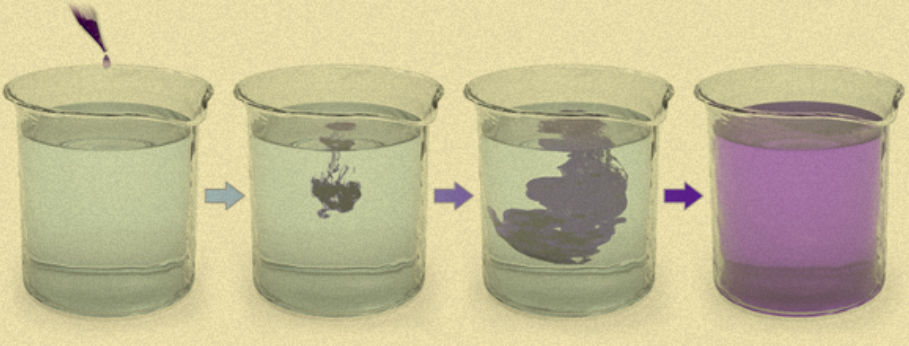Getting your Trinity Audio player ready...
Diffusion is the phenomenon in which particles of matter such as molecules and atoms move from an area where their concentration is high to areas with a lower concentration.
Related stories:
Sometimes a picture is worth a thousand words, especially when it comes to understanding the process of diffusion. In the image below you can see how purple pigment diffuses in a jar of water.
1 View gallery


This is what diffusion looks like: the spread of purple dye in a jar of water
(Photo: BruceBlaus, Wikipedia)
Before delving deeper into the process of diffusion, it’s helpful to observe it in action. Initially, all the purple molecules are concentrated in one small drop, while their concentration in the rest of the jar is zero. Gradually, they spread throughout the volume of the liquid until the entire liquid turns purple, and the concentration of the purple molecules is equal throughout the solution.
Diffusion is based on the random and spontaneous movement of molecules, such as the molecules of the purple dye in the image above, known as Brownian motion. The molecules move constantly and randomly in all directions, colliding with each other and with the sides of the glass.
As a result, the water molecules and the purple pigment molecules mix gradually. Given enough time, the mixing will be perfect and the dye molecules will be evenly distributed throughout the volume of the glass.
According to Fick's law, formulated by the German doctor Adolf Fick in 1855, the movement of particles from an area of high concentration to an area of low concentration is directly proportional to the concentration gradient. This means that the greater the concentration difference between the two areas, the more particles will move from the area with the higher concentration to the area with the lower concentration.
In addition to the concentration difference, the diffusion rate is also affected by other factors such as the temperature of the vessel, the distance between the molecules, and their size.
While we commonly associate diffusion with gasses and liquids, such as when we see smoke dispersing in the open air or a tea bag coloring water orange, diffusion also occurs in solids. Although the process is much slower in solids than in liquids and gasses, over time it can be significant enough to change the properties of the solid. This is observed, for example, during the preparation of certain types of steel.
Although diffusion may seem a simple and insignificant process, nature constantly utilizes it to equalize concentrations and maintain cellular functions, such as transporting oxygen and sugars to cells and removing waste from them. Even the molecule that provides cells with energy, ATP, is produced in the mitochondria using a method that relies on the laws of diffusion.
To learn more about diffusion, watch the video explaining the phenomenon.
Content distributed by Davidson Institute for Science Education

